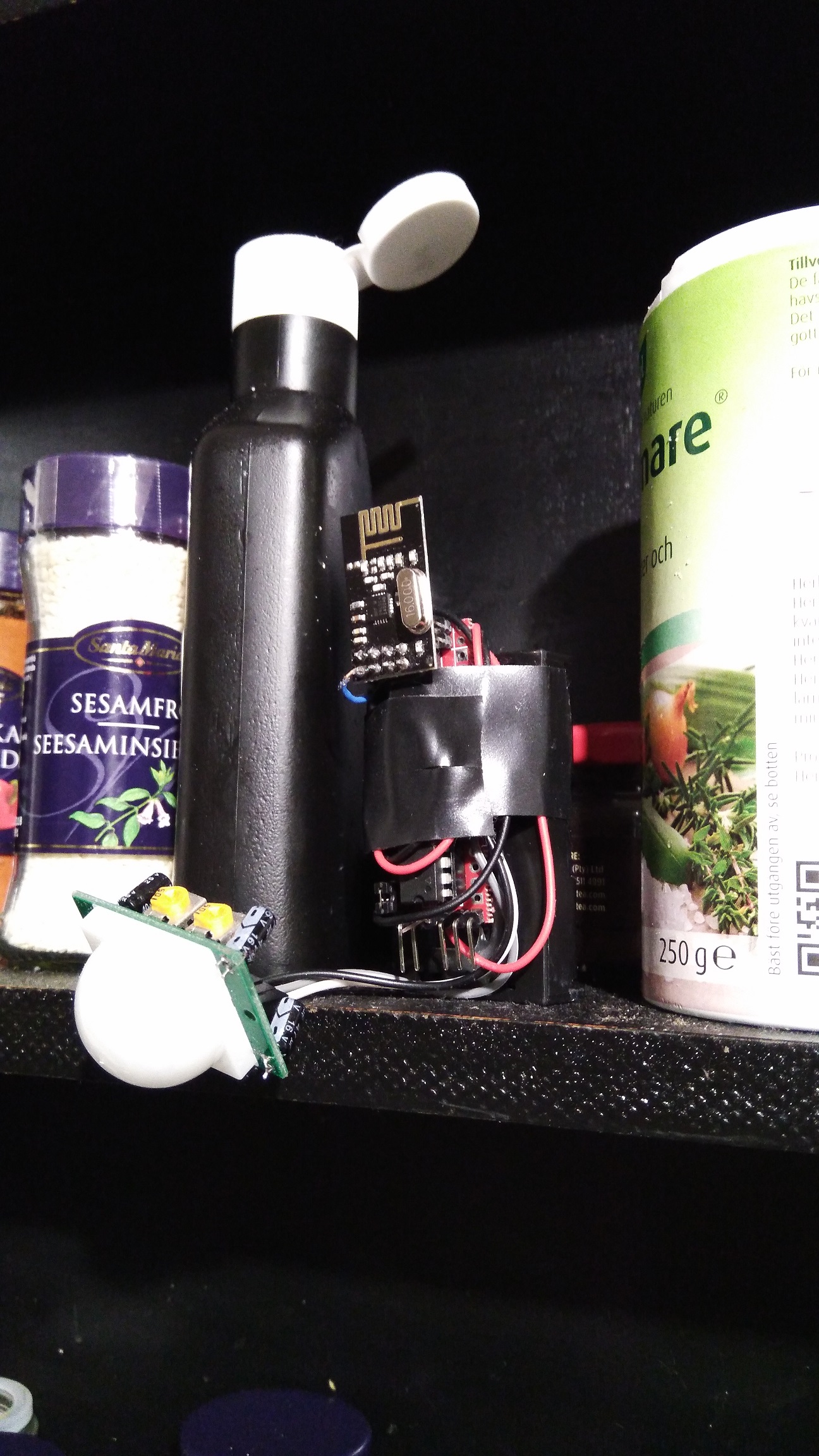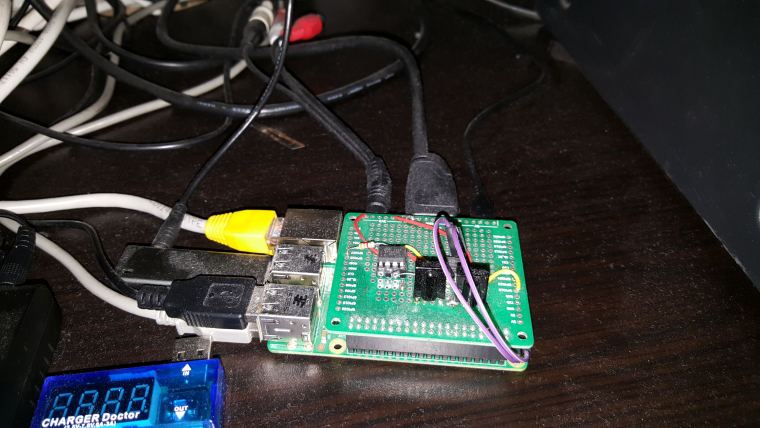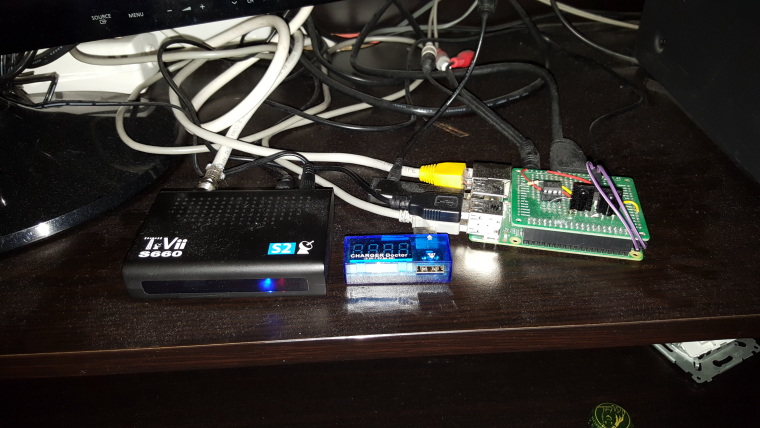What did you build today (Pictures) ?
-
@sundberg84 said in What did you build today (Pictures) ?:
@gohan - you mean HIGH waf? :) I really like the design... (if the first picture is only what you see)
Ofcourse! WAF is overrated anyhow...
@Yveaux - Yes, as long as you don't tell her ;)
-
Battery powered MySensors Washing machine & dryer monitor, using LDR's to monitor LEDs on front of the appliances.
Each time a LED toggles, the node wakes from interrupt and sends a message. Easy peasy!
When a device is ready, I'll get a message on my mobile phone :smile: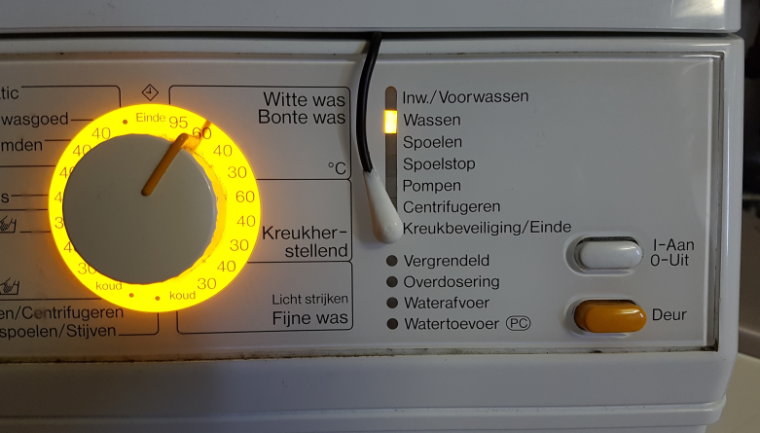
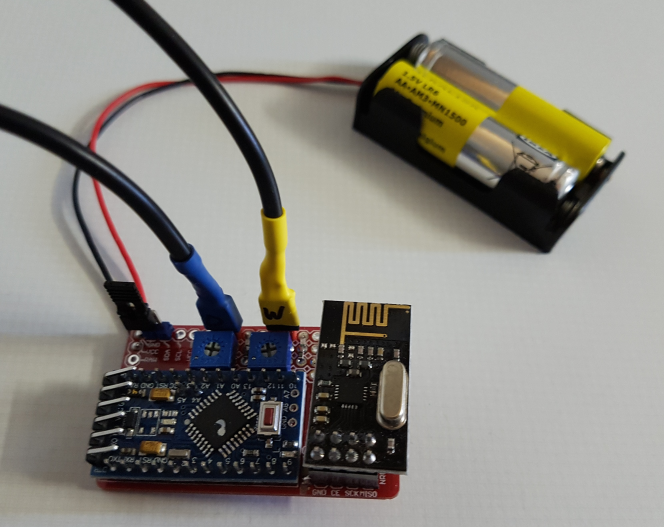
Still need to stuff it in an enclosure...
@Yveaux
I think I have similar washing machine, doesn't the LED blink if leave the laundry inside the machine after it had ended washing?
Just curious, if you anyway have had the lid/cover removed from washing machine, why not solder wires parallel to LED and connect to an optocoupler that feeds signal direct to Arduino, and also take 5V supply from the washing machine, and then you can avoid using batteries -
@Yveaux
I think I have similar washing machine, doesn't the LED blink if leave the laundry inside the machine after it had ended washing?
Just curious, if you anyway have had the lid/cover removed from washing machine, why not solder wires parallel to LED and connect to an optocoupler that feeds signal direct to Arduino, and also take 5V supply from the washing machine, and then you can avoid using batteries@bjacobse it's pretty different to remove the top that's usually easily removable to put inside furniture, and to unmount front panel and then solder stuff on the PCB. High WAF probably includes ensuring the warranty is not void :D
-
@Yveaux
I think I have similar washing machine, doesn't the LED blink if leave the laundry inside the machine after it had ended washing?
Just curious, if you anyway have had the lid/cover removed from washing machine, why not solder wires parallel to LED and connect to an optocoupler that feeds signal direct to Arduino, and also take 5V supply from the washing machine, and then you can avoid using batteries@bjacobse said in What did you build today (Pictures) ?:
@Yveaux
I think I have similar washing machine, doesn't the LED blink if leave the laundry inside the machine after it had ended washing?The sensor is placed on a led that lights when the machine is finished. I would prefer a led that is lit when it is washing and goes out when finished, but my machine hasn't any.
Just curious, if you anyway have had the lid/cover removed from washing machine, why not solder wires parallel to LED and connect to an optocoupler that feeds signal direct to Arduino, and also take 5V supply from the washing machine, and then you can avoid using batteries
Now I simply removed the cover to hide the wire. The electronics and led are hidden behind a lot of metal aan plastic. I didn't want to take the washer apart and the dryer too.
Just a simple solution working for multiple devices.
-
@bjacobse said in What did you build today (Pictures) ?:
@Yveaux
I think I have similar washing machine, doesn't the LED blink if leave the laundry inside the machine after it had ended washing?The sensor is placed on a led that lights when the machine is finished. I would prefer a led that is lit when it is washing and goes out when finished, but my machine hasn't any.
Just curious, if you anyway have had the lid/cover removed from washing machine, why not solder wires parallel to LED and connect to an optocoupler that feeds signal direct to Arduino, and also take 5V supply from the washing machine, and then you can avoid using batteries
Now I simply removed the cover to hide the wire. The electronics and led are hidden behind a lot of metal aan plastic. I didn't want to take the washer apart and the dryer too.
Just a simple solution working for multiple devices.
@Yveaux said in What did you build today (Pictures) ?:
@bjacobse said in What did you build today (Pictures) ?:
@Yveaux
I think I have similar washing machine, doesn't the LED blink if leave the laundry inside the machine after it had ended washing?The sensor is placed on a led that lights when the machine is finished. I would prefer a led that is lit when it is washing and goes out when finished, but my machine hasn't any.
Just curious, if you anyway have had the lid/cover removed from washing machine, why not solder wires parallel to LED and connect to an optocoupler that feeds signal direct to Arduino, and also take 5V supply from the washing machine, and then you can avoid using batteries
Now I simply removed the cover to hide the wire. The electronics and led are hidden behind a lot of metal aan plastic. I didn't want to take the washer apart and the dryer too.
Just a simple solution working for multiple devices.
Ah this make good sense, I didn't think the electronics was hidden and difficult to get to
-
@Yveaux said in What did you build today (Pictures) ?:
@bjacobse said in What did you build today (Pictures) ?:
@Yveaux
I think I have similar washing machine, doesn't the LED blink if leave the laundry inside the machine after it had ended washing?The sensor is placed on a led that lights when the machine is finished. I would prefer a led that is lit when it is washing and goes out when finished, but my machine hasn't any.
Just curious, if you anyway have had the lid/cover removed from washing machine, why not solder wires parallel to LED and connect to an optocoupler that feeds signal direct to Arduino, and also take 5V supply from the washing machine, and then you can avoid using batteries
Now I simply removed the cover to hide the wire. The electronics and led are hidden behind a lot of metal aan plastic. I didn't want to take the washer apart and the dryer too.
Just a simple solution working for multiple devices.
Ah this make good sense, I didn't think the electronics was hidden and difficult to get to
-
Battery powered MySensors Washing machine & dryer monitor, using LDR's to monitor LEDs on front of the appliances.
Each time a LED toggles, the node wakes from interrupt and sends a message. Easy peasy!
When a device is ready, I'll get a message on my mobile phone :smile:

Still need to stuff it in an enclosure...
@Yveaux So I never fully understood the reasoning behind putting sensors on a washer or dryer. So you start your clothes washing or drying before you leave for somewhere. Is there a reason to know that it's finished when you are away? There is nothing you can do about it until you get home, at which time you could reasonably assume that it is finished. If you are home, can't you just go and check it after some time? Why would you need a message on your phone?
Just curious.
-
@Yveaux So I never fully understood the reasoning behind putting sensors on a washer or dryer. So you start your clothes washing or drying before you leave for somewhere. Is there a reason to know that it's finished when you are away? There is nothing you can do about it until you get home, at which time you could reasonably assume that it is finished. If you are home, can't you just go and check it after some time? Why would you need a message on your phone?
Just curious.
-
@dbemowsk just to keep the machines running continuously ;-)
And I need to go up 3 stairs to just check on them :hankey: -
@Yveaux So I never fully understood the reasoning behind putting sensors on a washer or dryer. So you start your clothes washing or drying before you leave for somewhere. Is there a reason to know that it's finished when you are away? There is nothing you can do about it until you get home, at which time you could reasonably assume that it is finished. If you are home, can't you just go and check it after some time? Why would you need a message on your phone?
Just curious.
@dbemowsk said in What did you build today (Pictures) ?:
@Yveaux So I never fully understood the reasoning behind putting sensors on a washer or dryer. So you start your clothes washing or drying before you leave for somewhere. Is there a reason to know that it's finished when you are away? There is nothing you can do about it until you get home, at which time you could reasonably assume that it is finished. If you are home, can't you just go and check it after some time? Why would you need a message on your phone?
Just curious.
Or if someone else than you starts the machine before leaving for the full day, and you come back much earlier and if you don't have a warning you don't necessarily think about checking the washing machine when you arrive home. Here with the warm temperature if I leave the laundry in the washing machine for 4-5 hours without opening, I'm good for a new wash because it will smell pretty bad :(
-
@Yveaux So I never fully understood the reasoning behind putting sensors on a washer or dryer. So you start your clothes washing or drying before you leave for somewhere. Is there a reason to know that it's finished when you are away? There is nothing you can do about it until you get home, at which time you could reasonably assume that it is finished. If you are home, can't you just go and check it after some time? Why would you need a message on your phone?
Just curious.
@dbemowsk
My wife actually fairly often forget to check when the washingmachine is finished, and notice it a few hours later, when kids are a sleep and there is quiet in the house, I will imagine receiving an SMS when washing machine is ready to be emptied will help her, as she is checking her phone often,, even when kids are using all her time -
The value on a dryer is even more tangible: the sooner you get your clothes out, the less wrinkly they get.
-
The value on a dryer is even more tangible: the sooner you get your clothes out, the less wrinkly they get.
-
@dbemowsk while you are at it..consider :)
The dishwasher can be added as well. My devices dishwasher / washing machine / dryer send messages to all tvs that are turned on. Identifying themselves and invite you to come and clean them :). It comes in handy and absolutely jaw dropping on your visitors.
If you turn on the stove air circulation system in the kitchen... Why not greet the wife with automatically start the TV in the kitchen and play her favourite radio channel at her preferred volume...
-
Back to the OP topic, I made a micro-usb OTG cable (bottom cable below) that passes through all 5 pins:

This will replace the more fragile cable above it in the next generation of my nRF5 micro-usb programming/debug adapter.It turns out you can't buy this cable. At least, I couldn't find any for sale. Instead, I had to make it myself. Fortunately, Adafruit sells a little DIY kit that helped tremendously:
https://www.adafruit.com/product/1826:)
-
Back to the OP topic, I made a micro-usb OTG cable (bottom cable below) that passes through all 5 pins:

This will replace the more fragile cable above it in the next generation of my nRF5 micro-usb programming/debug adapter.It turns out you can't buy this cable. At least, I couldn't find any for sale. Instead, I had to make it myself. Fortunately, Adafruit sells a little DIY kit that helped tremendously:
https://www.adafruit.com/product/1826:)
-
Back to the OP topic, I made a micro-usb OTG cable (bottom cable below) that passes through all 5 pins:

This will replace the more fragile cable above it in the next generation of my nRF5 micro-usb programming/debug adapter.It turns out you can't buy this cable. At least, I couldn't find any for sale. Instead, I had to make it myself. Fortunately, Adafruit sells a little DIY kit that helped tremendously:
https://www.adafruit.com/product/1826:)
@NeverDie So many colours of nations offended... Have you thought of going for President ?
-
Actually, this was the very first time I've used shrink tubing. How could I do it better?
Mostly I didn't want there to be much bending, which might lead to tearing loose the solder connections. I wanted the finished cable to be a "once and done." Now that it's done, the connections should go very easy.

